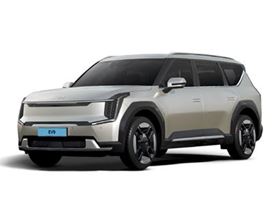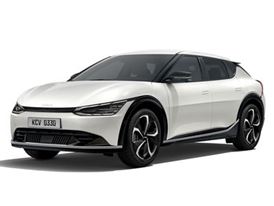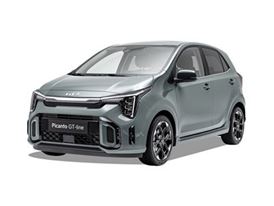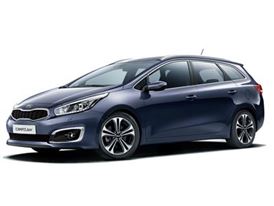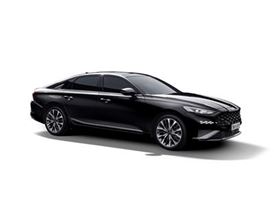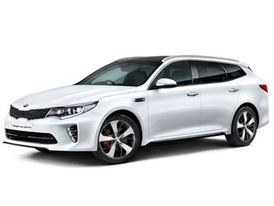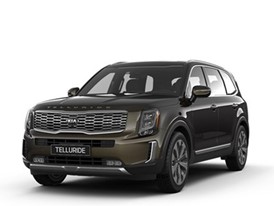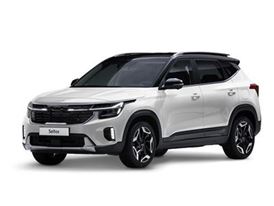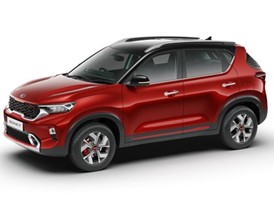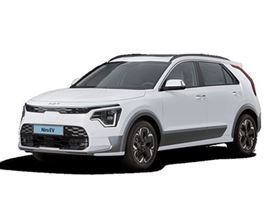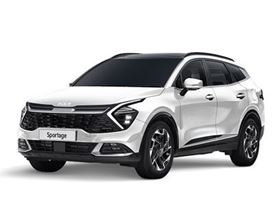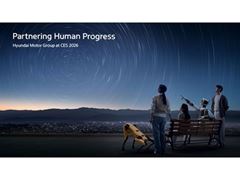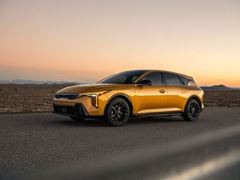Kia Motors today presents its vision for the future of mobility at the 2018 Consumer Electronics Show (CES) Asia in Shanghai. Under its new ‘Boundless for all’ vision, Kia is working towards a future in which opportunities for mobility and transportation are limitless. To broaden horizons with its mobility services, Kia is also demonstrating a range of new technologies as part of its new ‘Mobility-ACE’ strategy, to make its cars more Autonomous, Connected and Eco/Electric.
“In the future, various technologies will coexist to allow customers to enjoy different lifestyles in increasingly complex and connected urban environments,” said Seung-ho Hwang, head of Kia’s Auto Intelligence division. “With the proliferation of connected cities and lifestyles, it is important for Kia to provide a mobility experience that is not limited to niche groups of consumers – but one that is available to all. "Boundless for all" is therefore Kia’s vision for the future, in which everyone can enjoy the infinite value that mobility will bring.”
Kia’s ‘Mobility-ACE’ strategy is based around four core elements, presenting Kia’s vision for future personal transportation:
- Mobility – Kia’s near-future vehicles will benefit from advanced connectivity technologies to offer mobility to the broadest possible cross-section of society
- Autonomous – Kia plans to commercialize Level 4 autonomous driving technology, with ‘Smart City’ autonomous vehicle testing due to commence in 2021
- Connected – By 2025, Kia will adopt connected car technologies across every vehicle segment, and aim to make every single model a connected car by 2030
- Eco/Electric – Kia will introduce 16 new advanced powertrain vehicles by 2025, including a range of new hybrids, plug-in hybrids and electric vehicles, as well as an all-new fuel-cell electric vehicle in 2020
Beyond Autonomous Driving: Kia’s exhibition theme for ‘connected’ vehicles
At CES Asia 2018, Kia is presenting a range of interactive exhibits which combine existing and future technologies. These demonstrate how vehicles could be optimized for enhanced connectivity as they become more autonomous and hint at a future that even goes ‘Beyond Autonomous Driving’. Visitors can interact with Kia’s developing autonomous drive technologies through a VR simulator.
Jinwoo Lee, head of Kia Motors’ Autonomous Driving Development Center, commented: “Kia has already established the foundation for autonomous driving through the expansion of a range of Advanced Driver Assistance Systems. Based on these systems, we will commence a large-scale autonomous fleet operation in 2019, to study the real-world performance of self-driving cars. Reliable autonomous technologies will enrich our customers’ travel experience, giving them free time while in the car and ultimately supporting a mobility-enabled lifestyle.
Kia plans to operate a large-scale test fleet for autonomous technology on public roads from 2019, paving the way for commercial production of the technology. Kia aims to commercialize Level 4 autonomous vehicles in smart cities from 2021 with a new Smart City pilot project.
Niro EV Concept to preview technologies for future eco-friendly vehicles
Kia will continue to expand its range of environmentally-friendly cars in the coming years, and plans to offer seven different eco-friendly vehicles including hybrids, plug-in hybrids, electric vehicles and a fuel-cell electric vehicle.
As part of this strategy, Kia is exhibiting the Niro EV Concept at CES Asia 2018. First unveiled in January 2018 and on show for the first time in China, the concept previews the design and powertrain of the upcoming Niro EV production car. Combining the stylish design of a modern compact SUV with the high efficiency of an advanced battery-electric powertrain, the Kia Niro EV Concept represents the next step in the brand’s ongoing journey to electrification.
The Niro EV Concept is a fully-electric compact SUV, with an aerodynamically-efficient body which allows air to slip over, around and beneath the vehicle with ease. The traditional grille – no longer required for engine cooling – is replaced by a smooth panel which incorporates new ‘interaction’ motion lighting. In profile, the concept draws inspiration from the current Kia Niro, with a modish compact crossover silhouette, elevated body and wide C-pillar. The Niro EV Concept’s smooth rear aspect has clean and sharp trailing edges allowing air to flow more easily off the back of the car.
With a silent electric powertrain, and the anticipation that such a car would be driven most frequently on urban and suburban roads, the Niro EV Concept boasts new technologies to enhance safety for pedestrians.
The concept’s new Active Pedestrian Warning System (APWS) features a combination of front view cameras, object recognition technology and front speakers. If the system detects a pedestrian or cyclist crossing in front of the car, the speakers sound an alert targeted specifically at that person, warning them of the car’s presence. APWS is matched by the Niro EV Concept’s new interactive lighting system, which offers users and pedestrians a highly-intuitive visual communication with vehicle.
Inside, the cabin has been designed with a pure, minimalist and digital appearance, creating greater user interaction with new technologies and features. With a wrap-around design to cocoon the driver and passengers, the dashboard’s horizontal layout has broad and smooth surfaces. The effect is an innate sense of space and calm in the cabin, enhanced by the soft shades of silver, grey and bronze covering every surface.
Powered by a next-generation fully-electric powertrain, the Niro EV Concept employs new production-ready technologies earmarked for near-future EVs from Kia. Energy is provided by a high-capacity 64 kWh lithium-polymer battery pack, paired with a powerful 150 kW electric motor. The Niro EV Concept suggests a driving range of 238 miles (383 kilometers), with zero tailpipe emissions.
Partnerships with Baidu and Tencent QQ Music to deliver infotainment and connectivity tech
Kia is also exhibiting new infotainment technology at CES Asia 2018, specifically developed for the China market and underpinned by partnerships with two of China’s biggest technology companies, Baidu and Tencent QQ Music. In partnership with Baidu, Kia became the first car manufacturer to provide Chinese customers with Baidu Duer OS and Map Auto in 2017.
KyoWoong Choo, head of Kia Motors’ Infotainment Development Group, commented: “China is leading global demand for connected car technology, with high customer needs and expectations and the fastest adoption rate for new technologies. By developing connected car technologies that satisfy Chinese customers, Kia is developing a competitive edge in the global market – our collaborations with Baidu and Tencent QQ Music are making this possible.”
At CES Asia 2018, Kia is previewing the development of its new Tencent QQ Music-enabled infotainment system, due on-sale in early 2019. Customers can interact with the system’s new features through a special experience zone at the show.
The interactive cockpit-style exhibit contains a dashboard and steering wheel. As the user touches the steering wheel, the sensors automatically take a reading of the driver’s heart rate. Using this information, the infotainment system then recommends the type of music that the driver should listen to.
The system also incorporates voice recognition, allowing users to tell the car’s infotainment system how they are feeling. For example, if the user tells the car they are feeling tired, the car will compute this, and stream a lively playlist to help the driver feel more alert. Or the driver can use a voice command to prompt the vehicle to stream their favorite music playlist.
The technology allows users to search the web via voice commands while driving, giving them access to online information on-the-move. The system can also display weather forecasts and seamlessly play the appropriate music.
Interactive exhibits preview new in-car technology
At CES Asia 2018, Kia is exhibiting its latest Human Machine Interface (HMI) technologies, autonomous drive features These exhibits hint at innovations that could be adapted for use in the brand’s future vehicles. Kia is demonstrating these innovations through a set of interactive cockpit-style experiences, presenting the brand’s ‘Beyond Autonomous Driving’ vision with technologies that idle passengers can draw upon in a future of vehicle autonomy.
The first cockpit gives visitors the chance to experience the Niro EV Concept’s pioneering new HMI, with enhanced interaction between visitors and the vehicle. The infotainment and HVAC (heating, ventilation and air conditioning) systems are controlled by touch and gesture, with the steering wheel acting as a remote. The driver can ‘swipe’ along a perforated leather area on the base of the two-spoke wheel, with different gestures serving to switch between favorite music tracks, turn up the volume, and adjust cabin ventilation settings. A digital dashboard display provides additional information to the driver, such as vehicle settings, powertrain status, and trip information.
A second cockpit presents the Niro EV Concept’s Separate Sound Control System, allowing users in the front and rear rows to experience Kia’s sound separation technology. The technology allows front and rear passengers to listen to their own music at the same time without intruding on others in the car. The system features eight speakers installed in the headrests, simultaneously pumping out sounds for each seat row, and using noise-cancellation technology to ‘mute’ sound from the other row of seats. By creating two sound zones in the car, occupants in different rows can enjoy listening to separate music or podcasts. Developed in-house, Kia believes this technology could be adapted to enhance occupant comfort in future production cars.
Finally, visitors can experience a range of Kia’s autonomous drive support technologies with a series of interactive virtual reality (VR) exhibits. The VR headset simulations demonstrate Kia’s autonomous drive support technologies in a range of environments. Visitors choose from a variety of scenarios to experience, each featuring high-quality 3D modeling for maximum realism. Motion sensors provide real-time interaction and a driving experience supported by a steering wheel and Kia’s autonomous drive support technologies. This is the latest incarnation of a VR concept Kia has introduced in recent years to let visitors witness the benefits of the company’s new technologies.
Global brand campaign: Peter Pan returns with a futuristic take on the classic story
Kia Motors is screening its new global advertising campaign at CES Asia, entitled Peter Returns. Featuring characters from the beloved story of Peter Pan, the film presents Kia’s future brand vision ‘Boundless for All: Limitless mobility experience for everyone’ and the direction of future technology development in an engaging and easy-to-understand way.
The three-minute film is a re-imagining of the classic children’s tale and offers a futuristic take on Peter’s ongoing conflict with Captain Hook. Peter, joined by trusted companions Wendy and Tinker Bell, is on a mission to bring new technologies to the inhabitants of Neverland, who, until now, have been prevented from enjoying the fruits of technological progress thanks to the selfishness of nefarious pirate Hook. The film’s protagonists take advantage of multiple autonomous and advanced technology features in the Kia concept vehicle KED-12 to win the day.
Also on display, a separate video explains how the technology displayed in Peter Returns can be used in our daily lives. This technology includes ‘boundless’ communication, care and convenience features such as a health care system, a valet parking pilot and a sound focusing system for visitors to test as they relax and watch the film.
